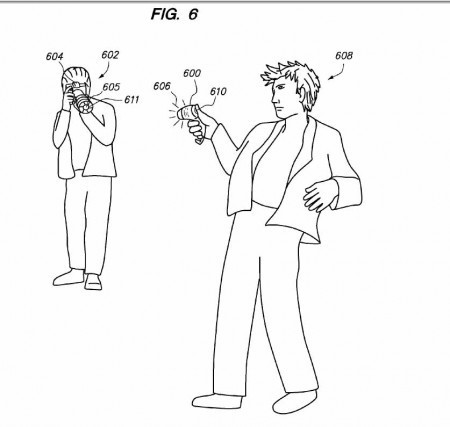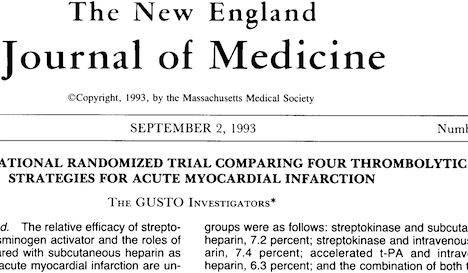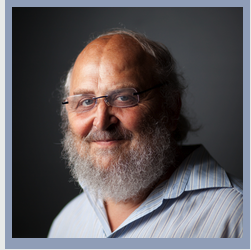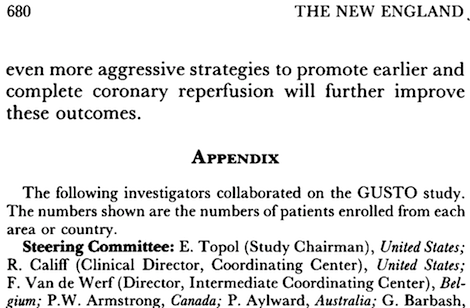Marc Abrahams's Blog, page 576
May 4, 2012
Headline of the day: Yogurt and ball circumference
Today’s Headline of the Day is from Scientific American, atop an article by Elie Dolgin:
Mice That Eat Yogurt Have Larger Testicles
The article itself begins:
Last summer a team of researchers from the Massachusetts Institute of Technology set out to better understand the effects of yogurt on obesity. They were following up on the results of a long-term study from the Harvard School of Public Health that had suggested yogurt, more than any other food, helped to prevent age-related weight gain. The M.I.T. team, led by cancer biologist Susan Erdman [pictured here] and evolutionary geneticist Eric Alm, wanted to replicate the work in mice. The researchers took a group of 40 males and 40 females and either fed the animals a high-fat, low-fiber, low-nutrient diet meant to mimic junk food or fed them standard mouse meals. They then supplemented half of each diet group with vanilla-flavored yogurt.
Their goal was to understand how a probiotic diet affects rates of obesity and its related complications, including cancer. But “the most entertaining aspects of all this were things we didn’t anticipate,” Erdman says….
(Thanks to investigator Elaine Snell for bringing this to our attention.)

“Crapping at the Opera in London before 1830″ [study]
Seventeenth century opera houses produced more than just music, a reality brought forth in this study:
‘Pots, Privies and WCs: Crapping at the Opera in London before 1830‘, Michael Burden. Cambridge Opera Journal, vol. 23, nos. 1-2, July 2011), pp 27-50.
Author Michael Burden [pictured here] is Tutor in Music, Dean, Chattels and Pictures Fellow and Professor of Opera Studies at New College, University of Oxford. His study contains the following indication, perhaps for multiple reasons: ”This article was conceived while working at the Huntington Library, San Marino, California on an Andrew Mellon Fellowship.”
Here’s the abstract of this lavishly detailed study:
What was the interplay between plumbing and the routines of audience behaviour at London’s eighteenth-century opera house? A simple question, perhaps, but it proves to be a subject with scarce evidence, and even scarcer commentary. This article sets out to document as far as possible the developments in plumbing in the London theatres, moving from the chamber pot to the privy to the installation of the first water-closets, addressing questions of the audience’s general behaviour, the beginnings in London of a ‘listening’ audience, and the performance of music between the acts. It concludes that the bills were performed without intervals, and that in an evening that frequently ran to four hours in length, audience members moved around the auditorium, and came and went much as they pleased (to the pot, privy or WC), demonstrating that singers would have had to contend throughout their performances with a large quantity of low-level noise.
(Thanks to investigator Susan DeFelice for bringing this to our attention.)

May 3, 2012
Paparazzi Zapper (New Patent)
“Photography has been around for many years. A problem associated with photography is oftentimes many people do not want to have their picture taken. For example, many celebrities do not want their picture taken or pictures of their companion’s [sic?] or relative’s [sic?] taken because they feel it is an invasion of their privacy.”
What to do? A new solution is described in this April 2012 US patent – Inhibiting unwanted photography and video recording
“ … as shown in FIG. 6, a celebrity 608 detects by visual observation that a picture is being taken by a paparazzo 602 having access to a camera 604.”
 But by swift use of the celebrity’s hand-held image distortion apparatus, unwanted image capture can be inhibited.
But by swift use of the celebrity’s hand-held image distortion apparatus, unwanted image capture can be inhibited.
“… as shown in FIG. 7, the head of the celebrity 608 within the center of the hotspot 712 is practically unrecognizable.“
 Note: The celebrity might be at a public venue, however,
Note: The celebrity might be at a public venue, however,
“… the celebrity could be at any venue or area, including but not limited to a restaurant, nightclub, parking lot, along a sidewalk, a corridor of a government building, or a battle zone and this would be in the spirit and scope of the present invention.”

Ig Nobel winner Oppenheimer moving to UCLA
The Daily Princetonian newspaper reports:
Breaking: Oppenheimer to leave for UCLA
After eight years at [Princeton] University, psychology and Wilson School professor Daniel Oppenheimer will depart for the University of California, Los Angeles effective July 1.
Oppenheimer received tenure at the age of 30 and has taught PSY 101: Introduction to Psychology, one of the largest classes in the school, since the fall of 2005…. Oppenheimer is popular among undergraduates, especially for his lecturing skills…. In addition to teaching, he has authored and co-authored over 40 academic papers related to psychology since 2003….
Oppenheimer also won the Ig Nobel Prize for Literature in 2006, which is awarded by past Nobel Prize winners for humorous or thought-provoking research. To win the prize, Oppenheimer demonstrated that people who use longer words actually appear less intelligent than those who don’t.
At UCLA, Oppenheimer will be jointly appointed to the department of psychology and the business school.

How waiting in line is like war
A defense researcher analyzes (1) customer satisfaction in a shopping scenario and (2) the efficient use of warplanes in battle. He comes up with a mathematical model common to both—in which “[the] parameter of principal interest is the expected customer-survival rate.” Here’s his paper on how the two relate:
“Queuing with Impatient Customers and Indifferent Clerks,” D.Y. Barrer, Operations Research, Vol. 5 (5), Oct. 1957, pp. 644-9. The author, at the Institute for Defense Analyses, Washington, DC, explains:
“In certain queuing processes a potential customer is considered ‘lost’ if the system is busy at the time service is demanded. The telephone subscriber hangs up when he gets a busy signal. A man trying to get a haircut during his lunch hour does not wait unless a chair is immediately available. Another form of this general situation is that in who customers wait for service, but wait for a limited time only. If not served during this time, the customer leaves the system and is considered lost. Such situations occur in the processing or merchandising of perishable goods. Many types of military engagements are similarly characterized. An attacking airplane engaged by antiaircraft or guided missiles is available for ‘service,’ i.e., is within range, for only a limited time. It is of interest to relate the expected rate at which aircraft are shot down to the firing rate and accuracy of the defensive weapons, the rate at which aircraft come within range, and the time that each airplane would remain within range if not shot down.”
BONUS: At some point Barrer also turned his attention to the mathematics of fly-fishing.

Faces that look like dishes

Panama pedestal dish - face on: Image from Wikimedia Commons
Kitchen utensils are not infrequent medical metaphors. When some people look at other people’s facies, they see dishes - the dishes used for dining.
From as early as the 1950s faces like dishes were already in the medical literature: “The nasomaxillary epithelial inlay for dish face deformity. Converse JM, Jeffreys FE. J Oral Surg (Chic), 1951 9(3):183-7.”
Here is more literature on dish-like faces.

May 2, 2012
New Row for people who distrust anything prefixed “neuro-”
Neuroeconomics, neuroeconomics, neuromarketing, neuroaesthetics, neuro-this, neuro-that…. Words that begin with the syllable “neuro” have come to trigger skepticism in many a modern person. For them, maybe, comes this study:
“A new row ordering strategy for frontal solvers,” Jennifer A. Scott, Rutherford Appleton Lab, Oxford, RAL Technical Report RAL-TR-1998-056, 1998.
 BONUS (perhaps unrelated): The founding Director of the Center for Neuroeconomics Studies and Professor of Economics, Psychology and Management [pictured here] says that a chemical is the key to morality, he says. Thus, perhaps, the birth of neurochemicaleconomics.
BONUS (perhaps unrelated): The founding Director of the Center for Neuroeconomics Studies and Professor of Economics, Psychology and Management [pictured here] says that a chemical is the key to morality, he says. Thus, perhaps, the birth of neurochemicaleconomics.

The lead author (of 976 co-authors) is not an author?
 We received a strange direct message (on Twitter) from Dr. Eric Topol [pictured here], who—to all appearances—was lead author on a study that lists (approximately) 976 co-authors. Dr. Topol sent the message specifically to say that he is not a co-author of that study. The study is:
We received a strange direct message (on Twitter) from Dr. Eric Topol [pictured here], who—to all appearances—was lead author on a study that lists (approximately) 976 co-authors. Dr. Topol sent the message specifically to say that he is not a co-author of that study. The study is:
“An international randomized trial comparing four thrombolytic strategies for acute myocardial infarction,” The GUSTO Investigators, New England Journal of Medicine, vol. 329, no. 10, September 2, 1993, pp. 673-82.

The 1993 Ig Nobel Prize in literature was awarded to Eric Topol, R. Califf, F. Van de Werf, P. W. Armstrong, and their 972 co-authors, for publishing that study, which has one hundred times as many authors as pages. You can download a copy of the paper and see the entire list of what appear to be co-authors. As you can see, the paper lists ”The GUSTO Investigators” as author, with a star next to the three-word phrase. The final three pages of the paper list—in tiny type—all the people who, together, are the GUSTO investigators. The first name is “Dr. E. Topol”, who is identified as “Study Chairman”:
The study’s first page says “Address reprint requests to Dr. Eric Topol”, gives his (then) address, and also says, “Dr. Topol, as chairman of the study, assumes full responsibility for the overall content and integrity of the manuscript”:
Dr. Topol has a new book out, which he is promoting heavily on Twitter. He has received much press attention, including a mention in his local newspaper, the San Diego Union-Tribune. Possibly spurred by that mention (but who, besides Dr. Topol, can say for sure?), he sent us this message:
(Eric Topol @EricTopol:) The only author of the NEJM paper was “The GUSTO Investigators” and the researchers were listed in the appendix. you’re off-base, not funny
The New England Journal‘s executive editor, Dr. Marcia Angell [pictured here] (who later became its editor in chief), came to the 1993 Ig Nobel ceremony and gleefully accepted custody of the prize on behalf of all those co-authors — one of whom now says he is not a co-author.

Multiplicity of Authors: 3 Stoops
 Today, a three-Stoop addition to our ongoing Multiplicity of Authors Project. The project chronicles research reports in which two or more co-authors share a family name. (See various issues of mini-AIR for other relics from the project, including a notable case of Multiple Multiplicity.):
Today, a three-Stoop addition to our ongoing Multiplicity of Authors Project. The project chronicles research reports in which two or more co-authors share a family name. (See various issues of mini-AIR for other relics from the project, including a notable case of Multiple Multiplicity.):
“Cortical columns for quick brains,” Ralph L. Stoop, Victor Saase, Clemens Wagner, Britta Stoop, Ruedi Stoop [pictured here], arXiv:1204.4558, April 20, 2012. The authors are variously at the University of Basel, the University of Zurich and ETH Zurich.
(Thanks to investigator Ginger Lane for bringing this to our attention.)

May 1, 2012
Stupidity papers called for
 In Spring 2013 the scholarly publication parallax is likely to become the very first journal to have had an entire issue devoted to the theme of ‘Stupidity’.
In Spring 2013 the scholarly publication parallax is likely to become the very first journal to have had an entire issue devoted to the theme of ‘Stupidity’.
The ‘call for papers’ outlines the theme(s) for potential authors. “We invite papers that respond to stupidity by examining its marginalisation within philosophical practice whilst also encouraging contributors to take seriously the provocation of writing stupidly as a critical practice.”
And challenges too, with the enigmatic question : “Is writing stupidly an impossible project?” The answer to which, with luck, will be revealed this time next year.
Note: Unfortunately, due to an oversight, Improbable failed to notify our readers in due time – the deadline for stupidity submissions having passed, coincidentally or not, on the 1st of April 2012 (April Fool’s Day).
Further resources for stupidity investigators:
• Improbable Research: the laws of human stupidity (The Guardian , 9 April 2012)
• Organization Studies and Stupidity
• Stupid stories and subsequent stupidity

Marc Abrahams's Blog
- Marc Abrahams's profile
- 14 followers


























